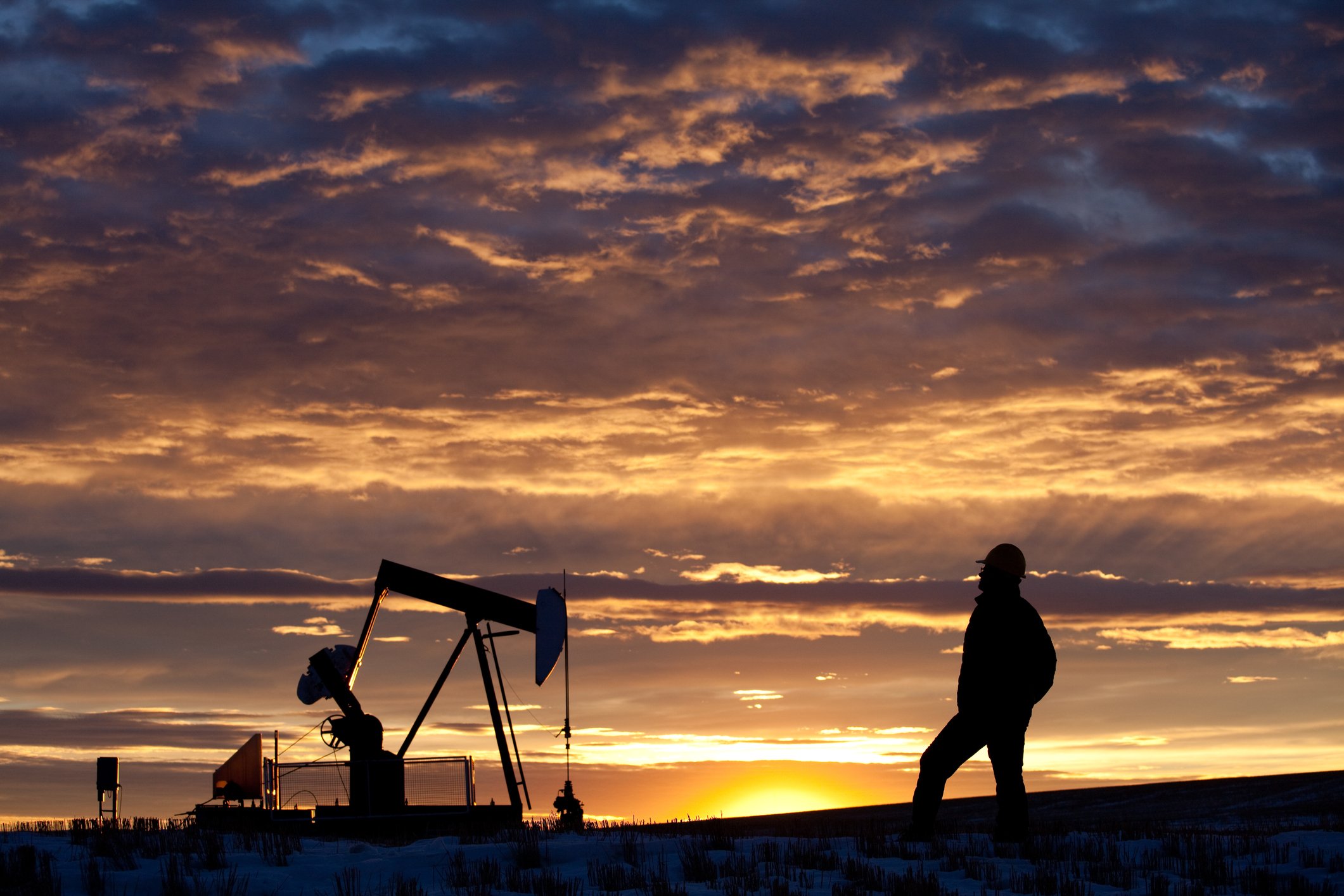
Image source: Getty Images.
When investors consider America's top shale plays, the Niobrara shale in the Rockies usually isn't even on their radar. But it is firmly on the radar of the U.S. Energy Information Administration, which tracks it along with six other top plays in its monthly productivity report. That's because it's become a significant producer of both oil and natural gas over the past few years. However, it's the play's potential to produce much more in that future that makes it an intriguing one for investors to watch.
The Niobrara shale 101
The Niobrara shale stretches through most of northern Colorado and eastern Wyoming, as well as into parts of Kansas and Nebraska:

Image source: EIA.
Still, the Niobrara is just one of several shale formations in the Rockies region. Therefore, it's better to focus on the bigger picture, which is the two major oil and gas basins in the region: The Powder River Basin in northeast Wyoming and the Denver-Julesburg, or DJ Basin, in northeast Colorado and southwest Wyoming. Most producers focus on either of those two areas:

Image source: EIA.
The DJ Basin has the richest petroleum history of the two, dating to an oil discovery made in Boulder County, Colo., in 1901. Today, the DJ Basin is known for the Wattenberg gas field, which is one of the largest natural gas deposits in the country.
The Powder River Basin, on the other hand, is known more for coal production than for oil and gas. However, the application of horizontal drilling and hydraulic fracturing is driving oil production growth from that region's stacked shale plays, which include not only the Niobrara-Codell but also the Turner, Parkman, Frontier, Sussex, and Shannon formations.
Producers believe that they're just beginning to tap the surface of the Niobrara and other hydrocarbon-rich shales in the Rockies. While there are dozens of companies working to unlock the vast resources trapped in the region, five stand out as those poised to dominate the Rockies for years to come.
The leading Niobrara shale producers
|
Niobrara Producer |
Primary Target |
Key Niobrara Statistics |
|---|---|---|
|
Anadarko Petroleum |
DJ Basin (Wattenberg field) |
350,000 net acres and 356,000 BOE/d of production |
|
Noble Energy |
DJ Basin (Wattenberg field) |
360,000 net acres and 113,000 BOE/d of production |
|
Devon Energy |
Powder River Basin |
470,000 net acres and 21,000 BOE/d of production |
|
EOG Resources |
DJ Basin and Powder River Basin |
148,000 net acres and 280 premium drilling locations |
|
Whiting Petroleum |
Redtail Niobrara in the DJ Basin |
129,076 net acres and 10,150 BOE/d of production |
Data source: Company investor presentations.
Oil giant Anadarko Petroleum (APC +0.00%) has a long history in Colorado, having operated in the Wattenberg field for more than 30 years. However, its best days appear to be ahead of it. Anadarko has already identified more than 4,000 future drilling locations in the DJ Basin's oil window, which it estimates to hold 1.5 billion barrels of oil equivalent resources. While it's running only one drilling rig right now, it has lots of running room once oil prices improve.
Noble Energy's (NBL +0.00%) largest U.S. onshore field is currently the Wattenberg field. However, it started to use horizontal drilling to tap the liquids-rich resources in the DJ Basin. These include the East Pony and Wells Ranch areas, where it controls more than 100,000 acres. Noble Energy believes that the DJ Basin will be a premier liquids play with lots of growth potential.
Devon Energy (DVN +1.43%) firmly believes in the potential of the Powder River Basin. That's why it spent $600 million late last year to acquire 253,000 net acres, which effectively doubled its position in the play. While the company halted drilling activity in 2016 to conserve cash flow and focus on reducing its costs, it could resume work in the basin early next year. With more than 1,300 potential well locations, Devon Energy could become the dominant player in the Powder River Basin as the oil market improves.
In mid-2014, shale king EOG Resources (EOG +1.10%) announced that it moved four horizontal plays in the DJ Basin and Powder River Basin from the evaluation phase into its drilling portfolio. At the time, the company noted that the Codell, Niobrara, Parkman, and Turner were "generating excellent rates of return and remarkably consistent well results." Further, it expected to be able to drill another 735 future wells over the next decade, which it anticipated would unlock 400 million barrels of oil equivalent resource.
But now that oil prices are much lower, the company fine-tuned its approach to focus only on premium drilling locations, which are those that earn a 30%-plus return at $40 oil. As a result, it narrowed its inventory down to 280 drilling sites. However, after completing just 25 wells this year, it has substantial running room even if oil prices remain weak.
After building up a leading position in the Bakken shale, Whiting Petroleum's (WLL +0.00%) second act is in the DJ Basin, with the company locking up a prime position in the oil window, which it calls the Redtail prospect. So far, the initial drilling results are excellent, enabling the company o boost its production up to more than 10,000 barrels per day as of the second quarter of this year. However, with more than 6,200 future drilling locations, it has a substantial growth runway.
Investor takeaway
Investors don't give the Niobrara shale much credit because it's not currently a vital growth driver for the industry. However, producers believe they're just scratching the surface of not only the Niobrara but also of other shale plays in the Powder River and DJ basins. That untapped potential makes this a region investors should keep an eye on as the oil market recovers, because it could be a major growth driver for the companies that control dominant positions in the Rockies.







